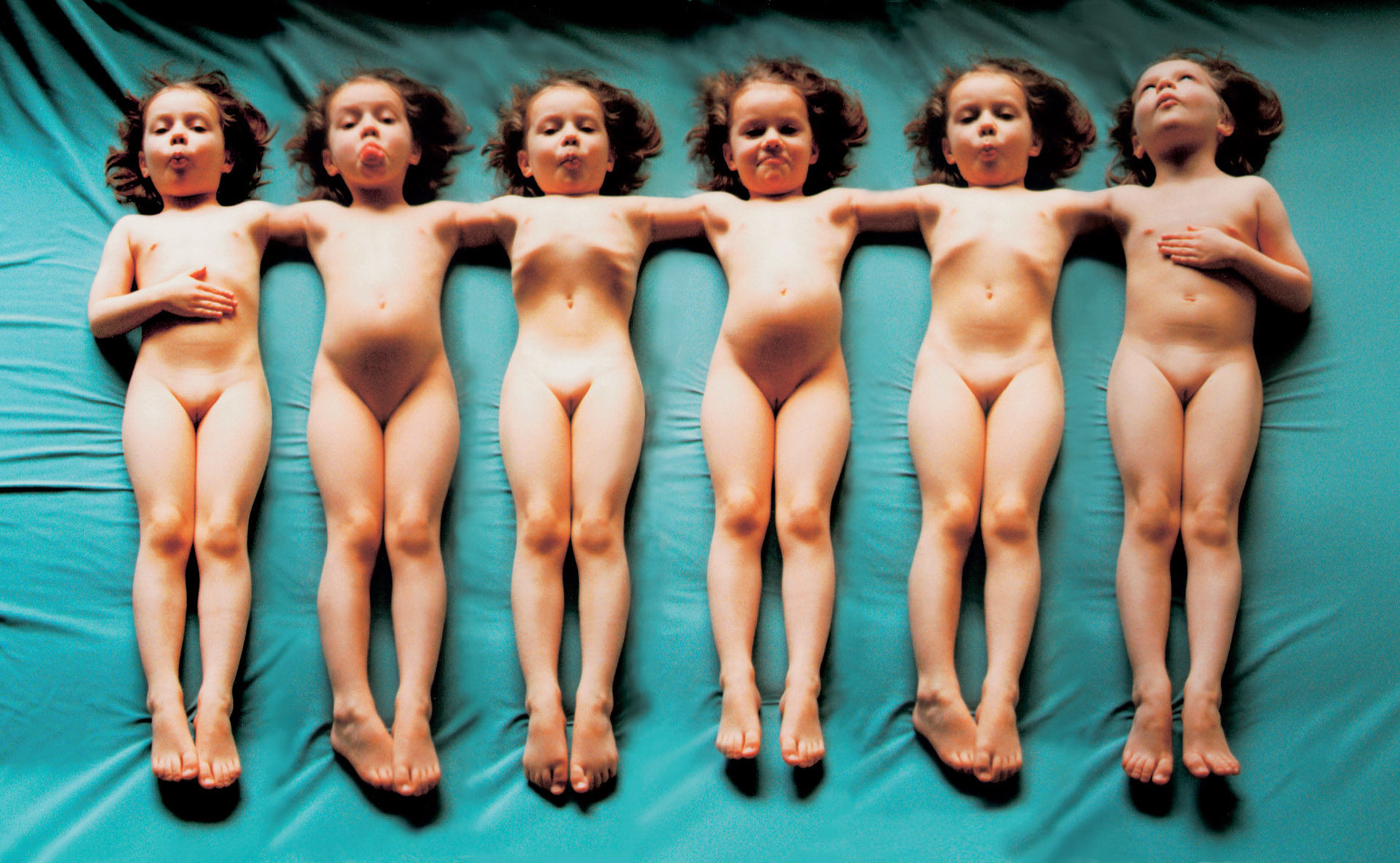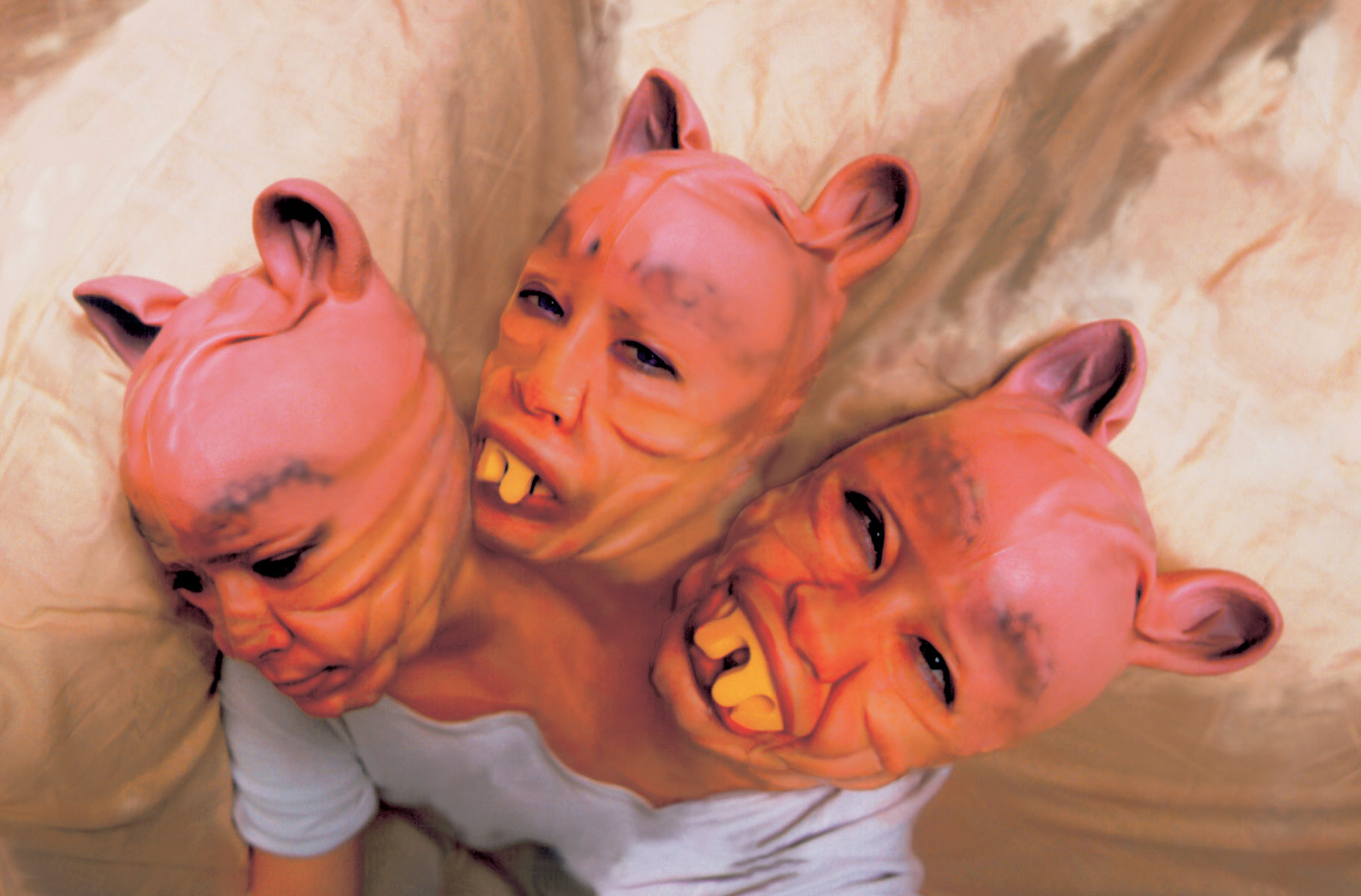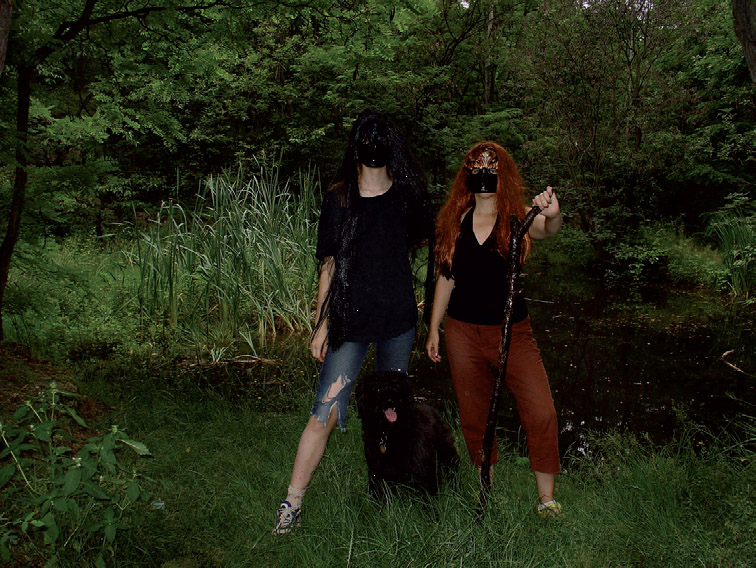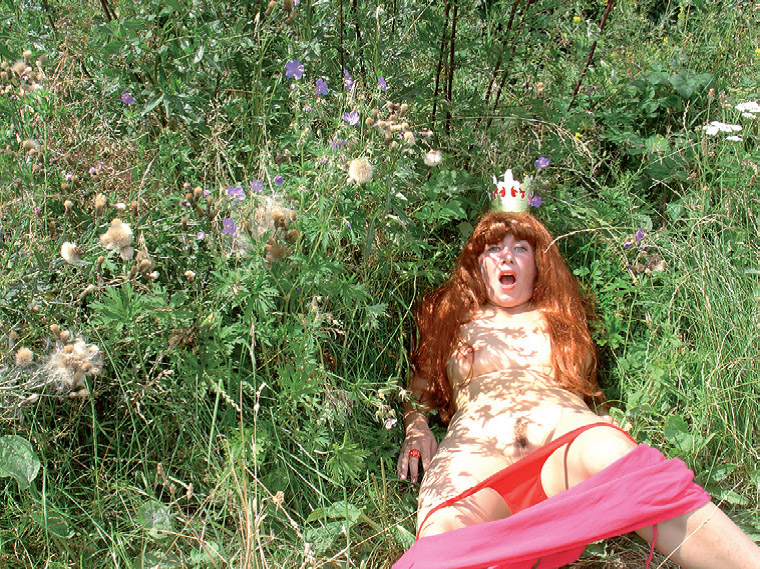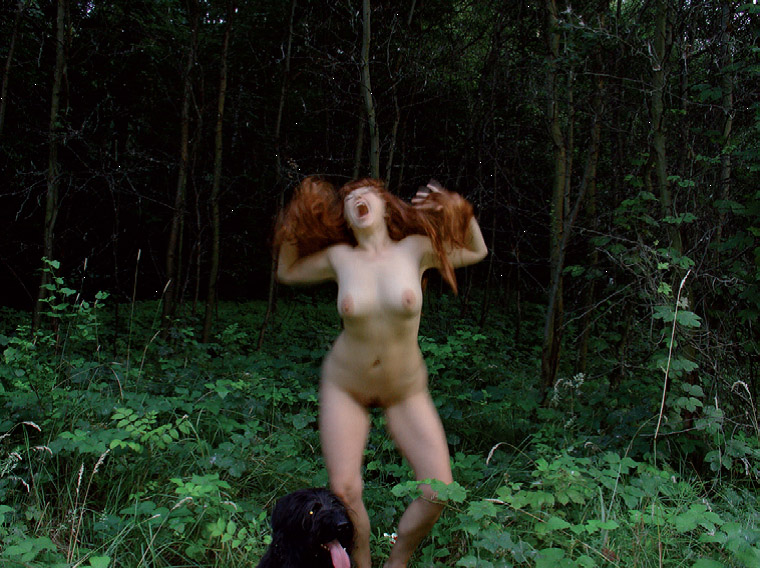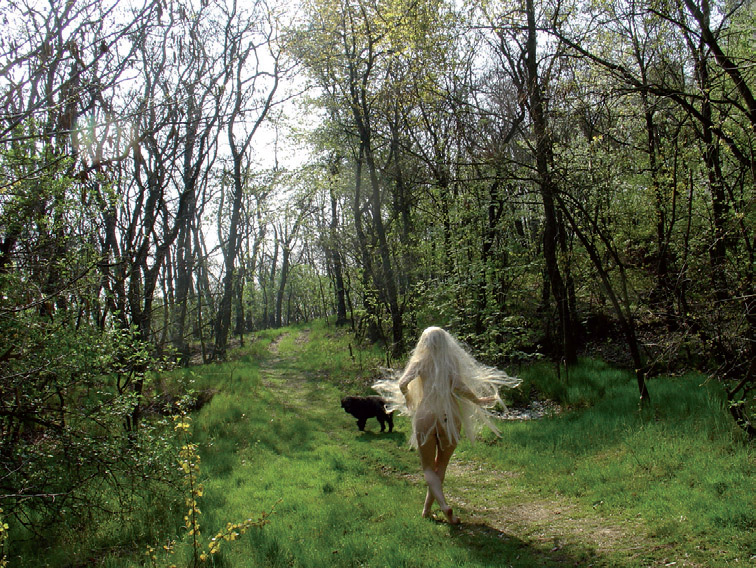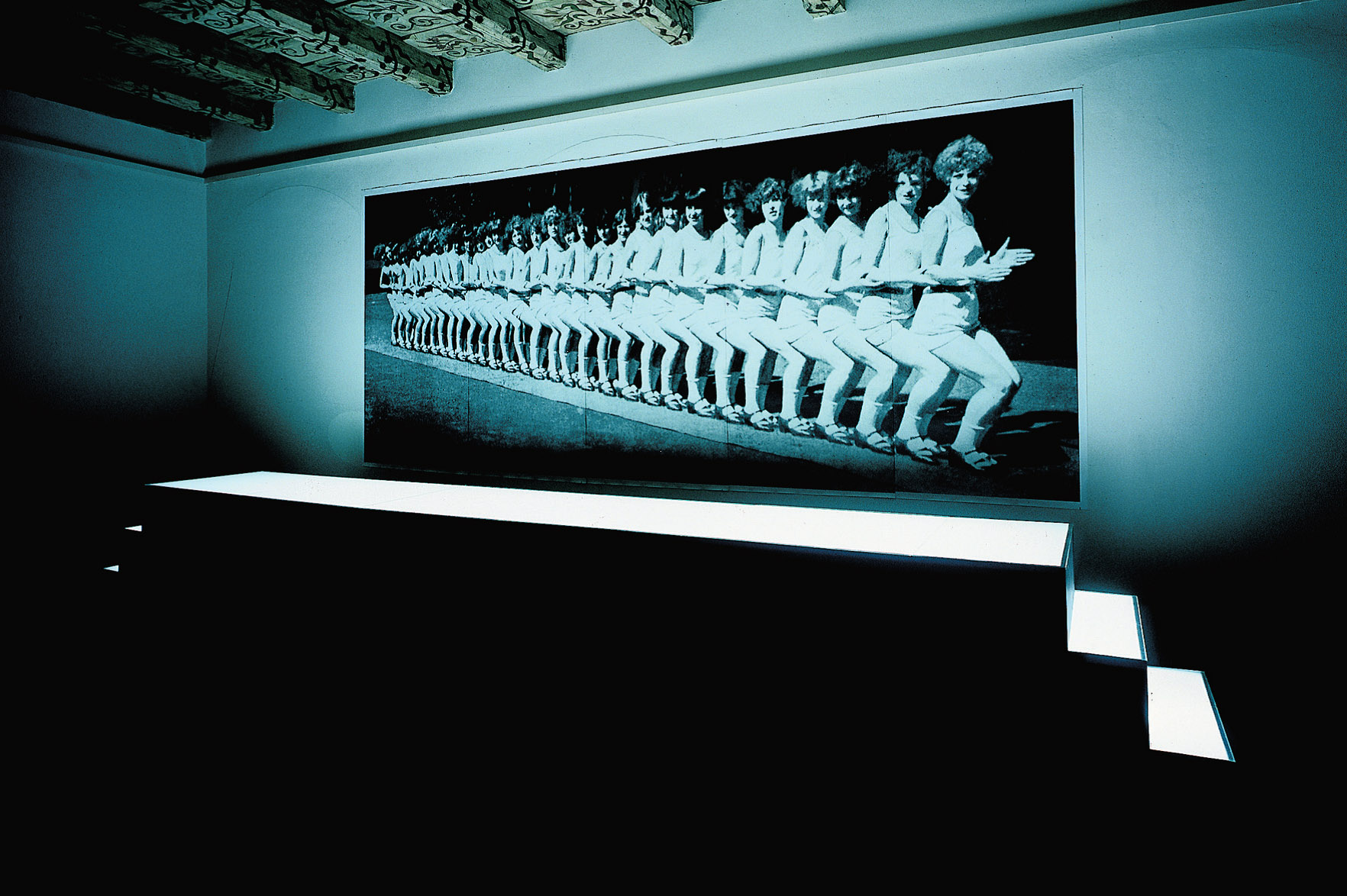Veronika Bromová
Reviewers have often described her approach to the female body as free, open and provocative. But such characteristics are used to describe the work of almost sil feminist artists. Let us therefore try to be more specific in defining Veronika Bromová’s work.
Veronika Bromová’s form of interest in the female body could be described as one of detached, sober examination. At the same time, we can also speak of it as of a very persona) involvement. If it were not misleading to do so, we could say that Veronika Bromová has a professional interest in the female body. For creative work often manifests this contradiction of detachment and obsession. It is this kind of approach, that of a professional artist, which so markedly distinguishes Veronika Bromová from her numerous feminist colleagues, in whose work the relation to the body is so frequently banal, exhibitionist or to varying degrees neurotic.
Veronika Bromová’s first works, Zakleté princezny (Bewitched Princesses) and Tance s medicinbaly (Dance with Medicine Balls) display a certain formai and aesthetic treatment of the female body. Bromová used the female body as a certain element, as an interesting form. In Dance with Medicine Balls, the effect of the body is of a beautiful ornament. The Bewitched Princesses are not so much erotic as deco-rative – not in any negative sense, but in her sensitivity to visual form and beauty. In both cases Bromová’s point of departure is the photo-collage. She then transplants this method into her work with digitally manipulated photography.
Her first digitally altered series of photographs, Holky (Girls) and Taky holky (Also Girls), shown at the Biennale of Young Artists in 1994, already proved a major success. These works, too, evince her efforts to find a distinctive and compelling visual form. Feminist issues may be their theme, but the viewer perceives and experiences this as secondary. Primary in these works is the striking visuality of the large photographs. Digitally adjusted photography and large-format presen-tation, approaches characteristic of the Euro-American art scene in the early 1990s, were in the Czech Republic still a novelty then, and it must be said that Bromová was one of the first Czech artists to introduce this medium to the Czech art scene.
The 1996 series Pohledy (Views] also consisted of large-format digitally manipulated photographs. They were first shown in the Kunsthalle in Baden Baden. Views was inspired by anatomy albums compiled for medical students, whose visual power Bromová had already proven in her 1995 Rozhovory (Interviews). In Views, fragments of the female body are stripped of the skin in certain places, so as to display the anatomical structure of the underlying tissue. The feminist content is explicit here, and forms a crucial part of the work. Bromová nonetheless is not addressing feminist issues in terms of mamon being exploited as sexual objects, or the social status of women, etc. Her later highly publicized photograph showing outspread thighs, skin stripped in the area of the genitals, a part of the series, is in one sense an allusion to Cindy Sherman, yet its message is different than Sherman’s photographs of rigid, broken mannequins, where the female body in pornographic poses is aggressively deformed to the point of creating an impression of terror. Sherman’s photographs are a critical gesture, pointing out how a woman can be stripped of her personality and humanity. What Veronika Bromová does is something quite different. The reference to pornography is clear, but it occurs on the level of irony and humor instead of angry critique. Bromová flays the skin of the female body, revealing the tissue, the tendons and the veins underneath – thus ironizing and completely negating the function of a pornographic photograph.
Veronika, what is your relationship to Cindy Sherman?
I met Cindy Sherman in person, if only very briefly. I was surprised that she was smaller than me; I think we were introduced by Zuzana Folkové at the opening of Sherman ‘s exhibition in the Rudolfinum Gallery in Prague. I was a bit taken back by that, but she was totally cool, really very amiable. always related to her work, and I admire it. Now that you ask me about her, I rather regret that I can’t Just go out for a coffee with her and have a chat…
Views also features a photograph of a screaming woman. Or more precisely, the profile of a screaming woman with a “bere” brain. It is interesting to call to mind in this respect Bruce Nauman’s 1991 installation Anthro/Socio. Veronika Bromová’s female scream does not give in to the forte of despair of the male scream as shown by Nauman, and, as does Nauman’s installation, her photograph also references the iconic Scream of Edvard Munch.
In 1997 Veronika Bromová created a multimedia installation for the Gallery of the City of Prague’s venue in the Old Town Hall, featuring photographs, video, and kinetic objects, entitled Na hraně obzoru (On the Edge of the Horizont. The installation works on several levels of meaning. Irony is one of them; in a sense it could be read as a parody of the horror films and thrillers that television and popular cinema Porce on us. The atmosphere of mystery, of enigmatic creatures and strange phenomena beyond human understanding – showing something beyond the usual horizon, beyond the clouds, and so on. We discover yet another level if we inquire into the nature of these creatures. For they are no “ordinary” gremlins, fairies, banshees, or any of the usual myriad of wraiths born in the mysterious dark womb of Nature, nor are they predators descended from outer space, but new electronic beings, digital freaks reminiscent of Čapek’s War With the Newts above all else, defective golems of our own making. If we continue asking questions, further levels of meaning surface, for instance that these creatures are perhaps part of our psyche – that they live inside of us.
Here too we must note that Veronika Bromová remains above all a visual artist, and that no small motivation when producing these creatures on a computer program was her “bewitchment” by form alone, by various mutations of shape and visual effects.
In 1998, Veronika Bromová presented in the Nová síň Gallery her installation Zemzoo; the following year she presented it in a slightly altered form in the Czech pavilion at the Venice Biennale. The key point of departure for reading her message is once again the female body, but this time grotesquely deformed. The photographs partly record (a digitally post-produced) performance, in which the artist is deforming her body. In Zemzoo we watch the movements of a woman’s body with the sensation of watching some strange water animal, some mysterious beast, an obscure and disfigured creature. Zemzoo cruelly negates the wonder of the female body. If we want to delve deeper into this work, we could sak ourselves who or what has deformed the female body. There exists no correct answer to this, however, as the meanings are open, left at the disposal of the viewers.
Working on this installation Bromová photographed herself in action, thus touching on the creative principles of body art.
Veronika, what is your attitude towards body art?
Altogether a very positive one. I think that this preoccupation with my body and my fascination with it started in adolescence, when all of a sudden I grew breasts size 4D. It was through these weird experiences with my own body. I feel Glose to the work of Rebecca Horn, Mike Kelley and Paul McCarthy, and many others… Orlan, or the Japanese performance artists, some of Yayoi Kusama’s work… but all of that I discovered only later. And certainly among the first body art recordings I ever saw were photos of a performance by Yves Klein. Among Czech artists, I would mention Štembera, Stratil… Drtikol… Mácha. I perceive pieces of them and their work as body art.
After 2000, the mood of Veronika Bromová’s work changed. Her 2003 cycle Autobiograf [Autobiograph) presented at the Krems-Factory, and her 2004 cycle Moje soubory (My Files) presented at the Center for Contemporary Arts in Prague, reflected this shift. Bromová continued to work with the female body, but in her earlier work such as Zemzoo, or Views, it was in fact unimportant whether the photographs captured the artist’s own body, or another female body. Now she photographs mainly herself. Her work has thus acquired very subjective and personal overtones. My Files, for instance, are a kind of photo-graphic diary. One is allowed a glance into the private life of a woman -artist, who is offering her privacy to the viewer’s tender mercies. The photographs are direct records of a situation or an event, so that the tendency towards body art is undisputed here. If before (On the Edge of the Horizon, Views, Zemzoo) she was concerned with a more universal message that implicitly included the artist’s personal experience, My Files carried a purely subjective testimony. Still, there is one more question to grapple with by way of conclusion.
Veronika, how do you feel about the female body in general? And how do you relate to your own body?
The female body is beautiful, the work of dřvine creation. lt is perfect -of course. Also, new life appears through the female body. Relating to my own body is more complicated, but I kind of got used to it and I am fond of it, to the point of actually putting the effort into looking for it well, so it lasts long so I can observe all its strange metamorphoses, to experience this would through it.
#7 New staged photography
Archive
- #45 hypertension
- #44 empathy
- #43 collecting
- #42 food
- #41 postdigital photography
- #40 earthlings
- #39 delight, pain
- #38 death, when you think about it
- #37 uneven ground
- #36 new utopias
- #35 living with humans
- #34 archaeology of euphoria
- #33 investigation
- #32 Non-work
- #31 Body
- #30 Eye In The Sky
- #29 Contemplation
- #28 Cultura / Natura
- #27 Cars
- #26 Documentary Strategies
- #25 Popular Music
- #24 Seeing Is Believing
- #23 Artificial Worlds
- #22 Image and Text
- #21 On Photography
- #20 Public Art
- #19 Film
- #18 80'
- #17 Amateur Photography
- #16 Photography and Painting
- #15 Prague
- #14 Commerce
- #13 Family
- #12 Reconstruction
- #11 Performance
- #10 Eroticon
- #9 Architecture
- #8 Landscape
- #7 New Staged Photography
- #6 The Recycle Image
- #5 Borders Of Documentary
- #4 Intimacy
- #3 Transforming Of Symbol
- #2 Collective Authorship
- #1 Face


